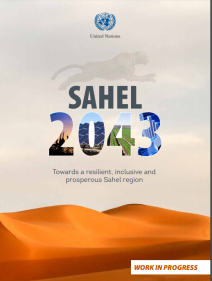The Sahel is one of the poorest regions in Africa and in the world. The Sahel comprises a semi-arid region of Africa extending from Senegal eastward to The Sudan – or from the Atlantic Ocean to the Red Sea. However, based on common development challenges, the United Nations (UN) limits the Sahel to ten (10) countries: Burkina Faso, Cameroon, The Gambia, Guinea, Mali, Mauritania, Niger, Nigeria, Senegal and Chad. The structural characteristic of lack of diversification of Sahel countries’ economies, contributes to low productivity and competitiveness, and reinforces the concentration of limited employment in low value-added primary and tertiary sectors. The economic model of the Sahel countries, based on their significant dependency on agricultural and mining proceeds as well as official development assistance (ODA1 ), poses structural limitations. The Sahel is a resilient region, with several domestic resources for building its future. It is endowed with abundant natural resources and workforce. The State and non-State actors (civil society organizations and the private sector), are the two main actors susceptible to unleash the potential of the region to bring the needed transformation changes.
Share this:
Release Date:
4 February, 2021
© United Nations Economic Commission for Africa

